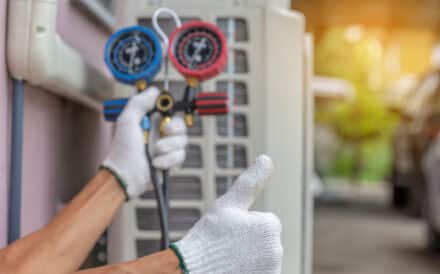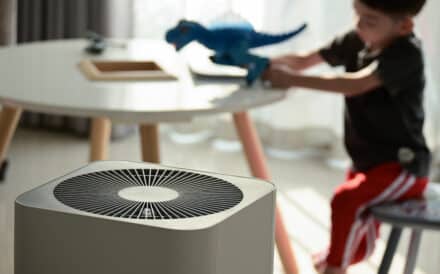Understanding the Role of Refrigerants in Air Conditioning
When temperatures soar in the summer months, your air conditioning system becomes your home’s best friend. But have you ever wondered how your AC actually cools your home? The secret lies in a substance called refrigerant. Let’s explore what refrigerants are, how they work, and why the types you use matter for both your home and the environment.
What Is a Refrigerant and How Does It Work?
A refrigerant is a special compound that has the ability to change states from liquid to gas and back again at relatively low temperatures. This remarkable property is what makes cooling your home possible.
Your air conditioning system works through a continuous cycle, with the refrigerant absorbing heat from inside your home, carrying it outside, releasing it, and then returning to repeat the process. Without refrigerant, your air conditioner would simply be a fan moving air around without actually cooling it.
Different Types of Refrigerants
Early air conditioning systems used chlorofluorocarbons (CFCs) like R-12 and hydrochlorofluorocarbons (HCFCs) like R-22, which you would recognize by its brand name, Freon. While popular and effective at cooling, these refrigerants were found to deplete the ozone layer, leading to their phase-out under the Montreal Protocol. From 2010 onwards, R-410a, which consists of a fusion of two hydrofluorocarbon (HFC) substances—R-32 and R-125—became the industry standard in place of R-22.
However, research has revealed that many HFCs are powerful greenhouse gases with costly repercussions for climate change. Recognizing this threat, the EPA received expanded authority in 2020 to regulate these substances.
Now, as part of their comprehensive climate strategy, new HVAC systems must use alternative refrigerants as R-410A joins the phase-out list: a crucial step toward reducing harmful emissions and protecting our planet. Today, refrigerants like R-32 are being used in systems, as this is a more eco-friendly and energy-efficient alternative to R-401A.
Making the Eco-Friendly Switch
When we talk about refrigerants and their environmental impact, we’re talking about the air we breathe and the planet our kids will inherit one day. If released into the atmosphere, the refrigerant in a single home’s air conditioning system can have the same greenhouse effect as driving a car for thousands of miles (which is hard to wrap your mind around).
Choosing greener refrigerants is a small choice that can make a big difference and help create a healthier planet. If you’re shopping for a new air conditioning system, here’s what to look for to make the best choice for both your home and the environment:
- Systems using low-GWP refrigerants
- Energy Star certification
- Proper sizing for your home (an oversized or undersized system can lead to inefficiency)
Plus, newer systems typically run more quietly and efficiently, so your energy bills will often decrease while your comfort increases, which is a win in our book.
Signs Your AC Might Be Low on Refrigerant
Unlike gas in your car, refrigerant in a properly functioning air conditioner shouldn’t need topping up, as it circulates in a closed loop. If your system is low on refrigerant, this can be an indication of a leak that requires professional repair. Here are some warning signs to look out for:
- You notice a difference in your system’s cooling performance
- The air coming from your vents isn’t as cold as it should be
- You hear unusual hissing sounds (which could indicate a refrigerant leak)
- There’s ice formation on the copper lines or the evaporator coil
- Your electric bills are suddenly higher than normal
The Importance of Professional Refrigerant Handling
As much as we love a good DIY project, refrigerant handling isn’t one of them. Here’s why:
- Safety concerns: Refrigerants can be harmful if improperly handled, potentially causing frostbite, respiratory issues, or even asphyxiation in enclosed spaces. Simply put, it’s not worth the risk to you or your loved one’s well-being.
- Environmental protection: Without proper handling from a trained professional, you could inadvertently release the substance into the atmosphere, which is harmful to the environment.
- Legal requirements: If the first two reasons weren’t convincing enough, then maybe this will be: federal law stipulates that only EPA-certified technicians can handle refrigerants. So, even if you’re handy and capable, leave it to the professionals to take care of.
Professional HVAC Service You Can Trust
Here at Silver State, our certified HVAC technicians are equipped with the knowledge and tools needed to responsibly handle all types of refrigerants. Whether you need a refrigerant leak repaired or you’re interested in upgrading to a more eco-friendly air conditioning system, we’re here to help. We’ll inspect your current system, make energy-efficient and eco-friendly recommendations, and ensure that any refrigerant living in your old system is removed and recycled in compliance with EPA guidelines.
Your comfort matters, and so does our planet. Contact us today to discover how our expert technicians can help you make the right cooling and heating choices for your home.




